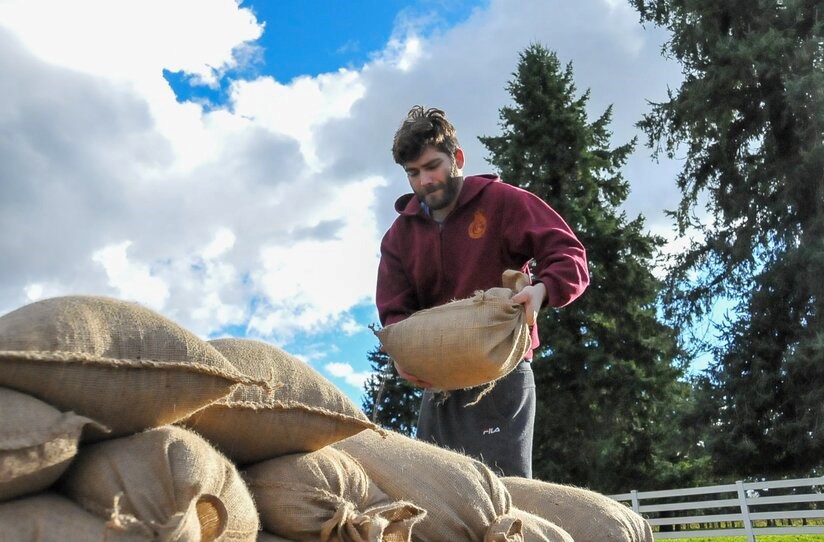Canadian municipalities have been handed a new tool to help them assess the rain, river and coastal flood hazards facing their communities in what one expert described as “flood risks for dummies.”
Released Wednesday in coordination with the Federation of Canadian Municipalities, the Municipal Flood Risk Check-Up is designed to act as a “first pass” for understaffed municipalities, and a way to allow more advanced planners to check their progress and ensure they haven’t missed anything.
Joanna Eyquem, who helped build the tool at Waterloo University’s Intact Centre on Climate Adaptation, said the easy-to-access flood assessment tool is based off national standards and designed for any public servant.
“It's brought that standard to life for people,” said Eyquem. “There's many municipalities who are smaller or medium size and just don't have that many resources to even start tackling flood risk.
“So the idea of this tool is: It's free. It's easy to use. It doesn't assume any prior technical knowledge. It doesn't need flood mapping.”
The rising cost of floods
Private insurers have already seen spiralling payouts in recent years, mostly driven by flood damage. In the 25 years from 1983 to 2008, Canadian insurers paid out an average of $422 million a year. Between 2009 and 2020, annual catastrophic loss payouts more than quadrupled to $2 billion every year, according to the Insurance Bureau of Canada (IBC).
The IBC is already in the process of transforming itself from an organization largely there to insure against fire, to one that's increasingly focused on flooding.
Only a fraction of Canadian property owners understands the risk they are facing. A 2016 survey showed that roughly 45 per cent of Canadian homeowners have insurance that will pay for flood damage, but only 10 to 15 per cent are actually covered.
Canada's National Adaptation Strategy has earmarked about $164 million to help update the country's national flood hazard maps. But those maps have yet to be released and many worry they will sink real estate prices in high-risk flood areas.
A 2021 report from the Canadian Institute for Climate Choices (CICC) found at least half a million buildings at risk of flooding are not identified on current government flood maps, and “virtually none of them show how climate change may affect the future risk of flooding.”
In B.C., the number of homes at risk of storm surge is projected to climb 44 per cent by the end of the century to nearly 70,000. That’s more than any other province in the country, found the CICC report. Metro Vancouver is a hot spot for such risk. Part of that is because of high property values — roughly $30 billion in home and building value sits within one metre of current sea level. And many municipalities in the region face twin pressures from rising seas and a network of massive rivers.
Between 2070 and 2100, the CICC report estimates the region’s annual flood damages will to climb to $510 million annually, a 17-fold increase, under a low-emissions scenario; and up to $820 million annually, 27 times the current value, under a high-emissions scenario.
That’s all expected to filter down to individual homeowners. Fifty years from now, average individual property damage is projected to hit $4,400 per year in Metro Vancouver, more than seven times today’s cost. All the more reason, said Eyquem, to head off those costs before they materialize.
'Easy to feel overwhelmed'
Anyone using the municipal flood-risk tool will first go through 50 questions — indicators that help analyze flood hazards due to intense rainfall, river or coastal flooding. The questions are designed to be answered using prior knowledge of what has happened in the community.
One of the questions ask about reported flood incidents in basements. Another question asks the age of flooded urban developments in order to gauge the effectiveness of stormwater infrastructure. Questions also target vulnerable populations, the extent of impervious surfaces (i.e. concrete), and how topography contributes to surface ponding.
A second section of the tool helps judge future flood preparedness and its impact on things like transportation and urban drainage, while the last part gauges what flood reduction measures have already been put in place — from managing sewers to using wetlands to sponge up floodwaters.
Eyquem described the flood tool as a conversation starter that gets people thinking about what floods could be on the horizon.
“It's quite easy to feel overwhelmed by the amount of guidance, or to know what guidance or standards are already available,” she said. “It's kind of like flood risks for dummies. It kind of assumes no prior knowledge.”
The federal government is already funnelling money through the Federation of Canadian Municipalities to help cities and towns prepare for floods. Eyquem says the tool is a way to help prioritize that spending across provinces that each have a separate set of regulations.
“The idea of this tool is that it helps municipalities tool up, no matter what province they're in,” she said.
Even big municipalities that have their own flood hazard mapping and plans to cope can benefit from the tool, said Eyquem. For those cities, she recommended using the tool once a year to document progress, and prioritize and budget for what still needs to get done.
She said her team is already in talks with a number of other regional municipal bodies — including the Union of BC Municipalities — to get the tool into people’s hands.
Until then, Eyquem's message to residents across Canada is to look at the flood tool and see what their municipality is doing. Then ask questions.


